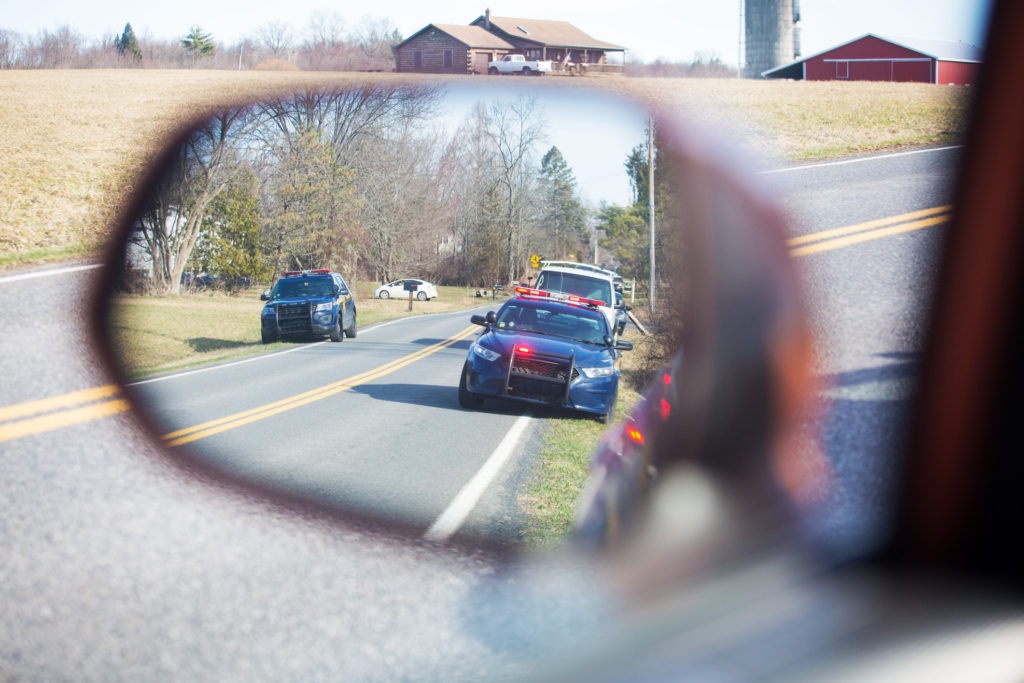
Roadside Safety, Part 2: Officer Safety Precautions
In our last blog, “Roadside Safety, Part 1: What do the stats say?”, we shared statistics and discussed the roadside dangers of the law enforcement profession. The data was staggering – an average of 30,000-plus officers are injured and 100-plus officers are killed on duty each year.
Police are husbands, wives, daughters, sons – real people with real lives who are willing to give their lives in the name of restoring peace and order in our communities. Police lives and safety matter.
Below are some of the ways officers stay safe on road patrol, some Officer safety precautions that can be taken, and recommendations from our L-Tron Law Enforcement Support Team.
Roadside and Officer Safety Precautions:
- Officers – use warning lights, whether in a high-speed chase, a low-speed pursuit, or pulled up along the curb. Put your lights on so others can see you, even during the day. One study showed that 49% of studied crashes occurred in daylight and 70% in clear weather. When pulled over to make a phone call, text, or deal with some other in-car distraction, use your hazard lights. Better yet, pull off the road entirely into a parking lot.
- An officer’s patrol car is the first and primary safety device typically in road-related incidents. A patrol car is used to block or re-route traffic and protect those involved, for example, crash victims. This might be parking offset behind a stopped vehicle or blocking traffic at a crash scene. A car handles the impact from another vehicle much better than your body. That’s the reason people should strongly consider remaining inside their vehicles when involved in a crash. Walking outside your car in traffic is likely NOT the safest approach. This is the reason police officers approach on the passenger side of a car during a traffic stop on a busy highway.
- Police on roadways wear high-visiblility retro-reflective gear. They and many other professionals are actually required by the Occupational Safety and Health Administration (OSHA) to wear “high visibility safety apparel.” If you can’t pull completely off the roadway, hazard lights offer only basic protection. If you travel frequently, consider stocking your car with a roadside safety kit including high-visibility devices and apparel. Help other motorists see you.
- Police officers are frequently reminded to wear their seat belts at all times, even when parked. You should too. If you’re thinking this is going overboard, check this out. A 2016 report released by the FBI, cites 26 accidental police officer deaths due to automobile accidents. In at least 11 of the fatalities, the victims were not wearing seat belts, including two officers who “were seated in parked motor vehicles at the times of the accidents.”
- While many people think police officers can speed whenever they want, they are typically trained to be mindful of their speed, particularly in a pursuit. Going faster is NOT always the best option. The same concepts apply to everyday driving. The “rules of the road” are directed at motorist and pedestrian safety with physics and environment as foundations. Sound engineering principles and statistical data keep safety current. Organizations like the National Highway Traffic Safety Administration (NHTSA) provide a wealth of information about proven safe driving practices.
- Establishing driving skills and keeping them honed is a particular focus for police since most officers spend the bulk of their time driving. From training in emergency vehicle operations to refresher courses, how a police officer drives is one of the most closely scrutinized professional standards. The average motorist can benefit from similar focus by taking a defensive driving course and simply following the rules of the road.
- Choose the safest equipment for your car and keep your vehicle maintained. Police agencies spend a lot of money on cars and equipment to keep officers safe. Our next roadside safety blog will focus on this.
Be safe out there & take the necessary Officer safety precautions.
NEXT: What patrol car equipment can help to keep your “office space” aka police car, safe.